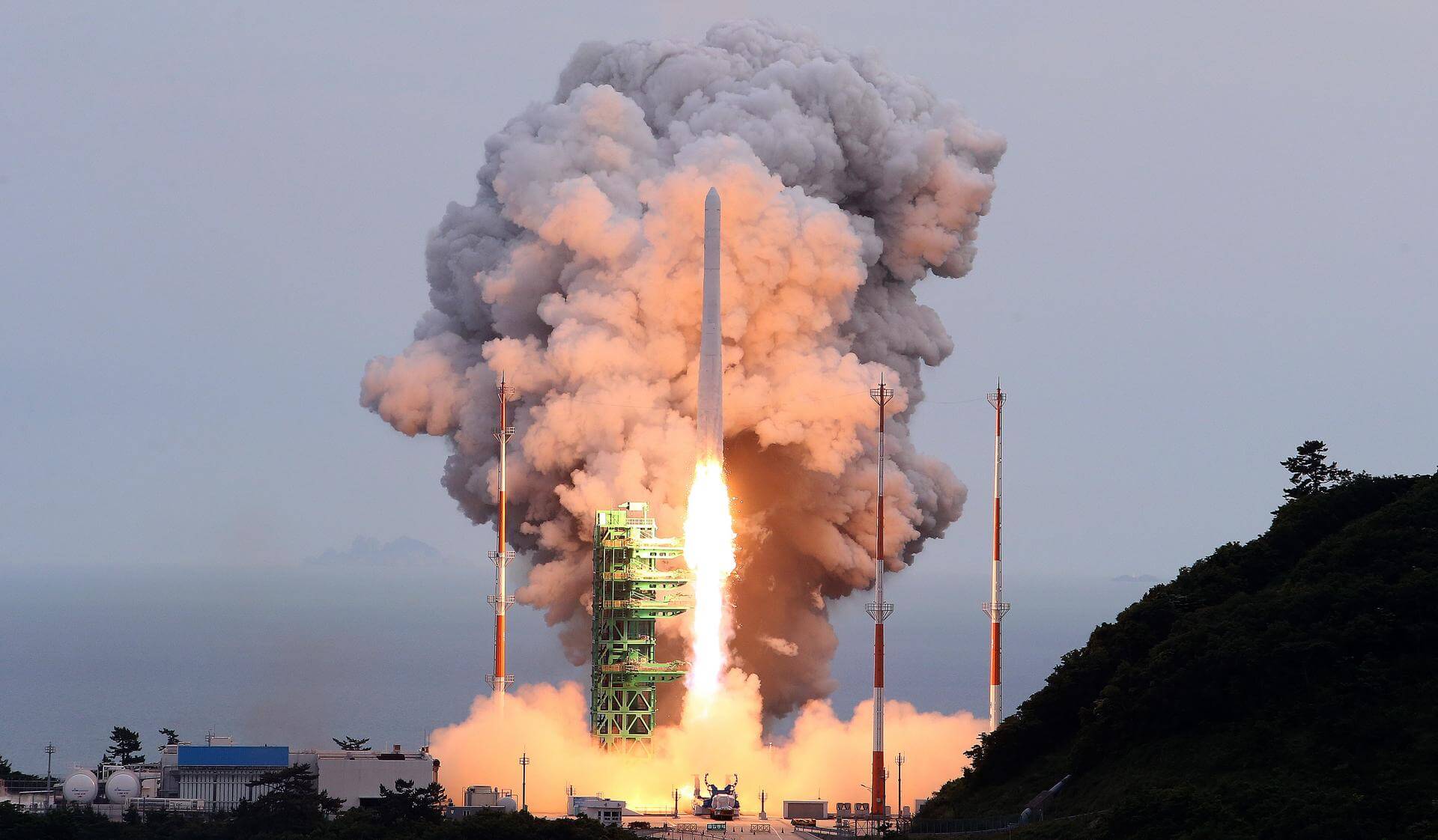
Nuri
ActiveKorea Aerospace Research Institute (KARI)
Oct. 21, 2021
Description
Nuri, also known as KSLV-II, is South Korea's second carrier rocket and the successor to KSLV-1.
Specifications
-
Stages
3 -
Length
47.2 m -
Diameter
3.5 m -
Fairing Diameter
3.5 m -
Launch Mass
200.0 T -
Thrust
2612.0 kN
Family
-
Name
Nuri -
Family
― -
Variant
2 -
Alias
― -
Full Name
KSLV-2 Nuri
Payload Capacity
-
Launch Cost
― -
Low Earth Orbit
2600.0 kg -
Geostationary Transfer
Orbit
― -
Direct Geostationary
― -
Sun-Synchronous Capacity
―
Korea Aerospace Research Institute
Government
Administrator: Lee Sang-Ryool
KARI 1989The Korea Aerospace Research Institute (KARI) established in 1989, is the aeronautics and space agency of Republic of Korea. Its main laboratories are located in Daejeon, in the Daedeok Science Town.
Upcoming Spaceflights
Nuri | CAS500-3
Korea Aerospace Research Institute | South KoreaNaro Space Center, South Korea
Nov. 26, 2025, 3:54 p.m.
Nuri | NEXTSat-2 & SNIPE
Korea Aerospace Research Institute | South KoreaNaro Space Center, South Korea
May 25, 2023, 9:24 a.m.
Nuri | Flight Test 2
Korea Aerospace Research Institute | South KoreaNaro Space Center, South Korea
June 21, 2022, 7 a.m.
Status: Launch Successful
Mission:
Second flight of the KSLV-II "Nuri" launch vehicle, carrying a dummy satellite Payload of 1500 kg to sun-synchronous orbit. The mission will in addition launch the performance verification satellite (PVSAT) and four Cubesats: - CubeSat (6U) STEP Cube Lab-II - CubeSat (3U) SNUGLITE-II - CubeSat (3U) MIMAN - CubeSat (3U) RANDEV
Sun-Synchronous OrbitNuri | Flight Test
Korea Aerospace Research Institute | South KoreaNaro Space Center, South Korea
Oct. 21, 2021, 8 a.m.
Falcon 9
Starlink Group 10-51
Launch Complex 39A - Kennedy Space Center, FL, USAA batch of 29 satellites for the Starlink mega-constellation - SpaceX's project for space-based Internet communication system.
Kinetica 1
Chutian-2 01 & 02
Launch Area 130 - Jiuquan Satellite Launch Center, People's Republic of China2 satellites built by the China Aerospace Science and Industry Corporation (CASIC) for testing operations of Very Low Earth Orbit (VLEO) satellites f…
Long March 11
Shiyan 32 01-03
Oriental Spaceport mobile launch ship - Sea Launch3 Chinese satellites reported to be for "orbital technological testing" purposes. Actual usage not known.
Falcon 9
Starlink Group 11-14
Space Launch Complex 4E - Vandenberg SFB, CA, USAA batch of 28 satellites for the Starlink mega-constellation - SpaceX's project for space-based Internet communication system.
Falcon 9
Starlink Group 6-81
Space Launch Complex 40 - Cape Canaveral SFS, FL, USAA batch of 29 satellites for the Starlink mega-constellation - SpaceX's project for space-based Internet communication system.


